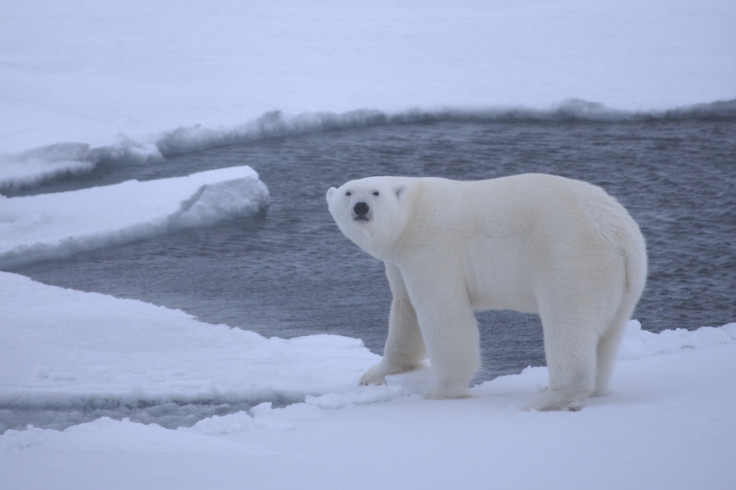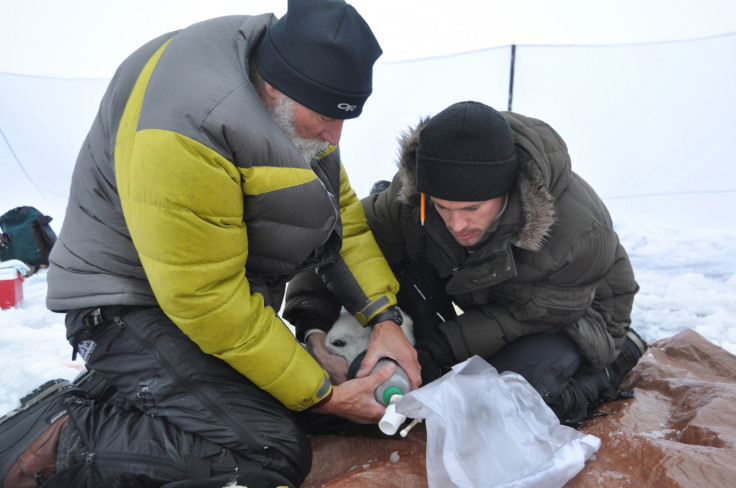Polar bears cannot compensate for sea ice loss starvation with slowed metabolism in summer
Polar bears are unable to make up for summer food deprivation when the sea ice melts by entering a "walking hibernation", a study has found.
During the summer ice melt, polar bear feeding opportunities are severely limited and the increasing sea ice loss represents a significant threat to the future of the species. When the sea ice melts in summer, they are forced ashore.
Previously, scientists had said polar bears forced ashore may be able to make up for their restricted foraging diet by entering a low energy state known as walking hibernation, allowing them to survive the lean months.
However, a team of scientists publishing their findings in the journal Science have found this is not the case. Instead, polar bears spend a significant amount of energy during the warmer mounts, characteristic of their regular metabolism.

The authors captured more than 20 polar bears and implanted temperature loggers and a tracking device to monitor their movements on shore and the ice between 2008 and 2010. Findings showed their summer activity and body temperature were typical of fasting, non-hibernating animals – with little to no indication of walking hibernation (where the metabolism would slow down).
"We found that both core temperature and activity remained above values observed during winter hibernation," the authors wrote.
"The gradual declines in core temperature during summer suggest a typical mammalian response to fasting, which offers limited to no energy savings based on mass-specific metabolic rates. Thus, our data indicate that bears cannot use a hibernation-like metabolism to meaningfully prolong their summer period of fasting and reliance on energy stores.

"In conjunction with theoretical models linking normal metabolic rate to depletion of stored energy and mortality, our findings suggest that bears are unlikely to avoid deleterious declines in body condition, and ultimately survival, that are expected with continued ice loss and lengthening of the ice melt period."
But another find from the study showed polar bears appear to have developed a way to avoid unsustainable heat loss while swimming in the freezing waters. To keep up their interior body temperature (meaning they can swim more frequently and for longer), the bears cool the outermost tissues of their core to form a sort of insulation. This is known as heterothermy.
During the study, one of the bears swam continuously for nine days, covering almost 400 miles – the longest polar bear swim ever recorded. This came at a huge cost, though. She had lost 22% of her body mass by the end and her cub.

"This regional heterothermy may represent an adaption to long-distance swims, although its limits remain unknown," the paper said.
Study leader John Whiteman, from the University of Wyoming, said: "We found that polar bears appear unable to meaningfully prolong their reliance on stored energy, confirming their vulnerability to lost hunting opportunities on the sea ice – even as they surprised us by also exhibiting an unusual ability to minimise heat loss while swimming in Arctic waters."
Steve Amstrup, chief scientist at Polar Bears International, added: "It fills a gap in our otherwise extensive knowledge of polar bear ecology and corroborates previous findings that the key to polar bear conservation is arresting the decline of their sea ice habitat."
© Copyright IBTimes 2025. All rights reserved.






















